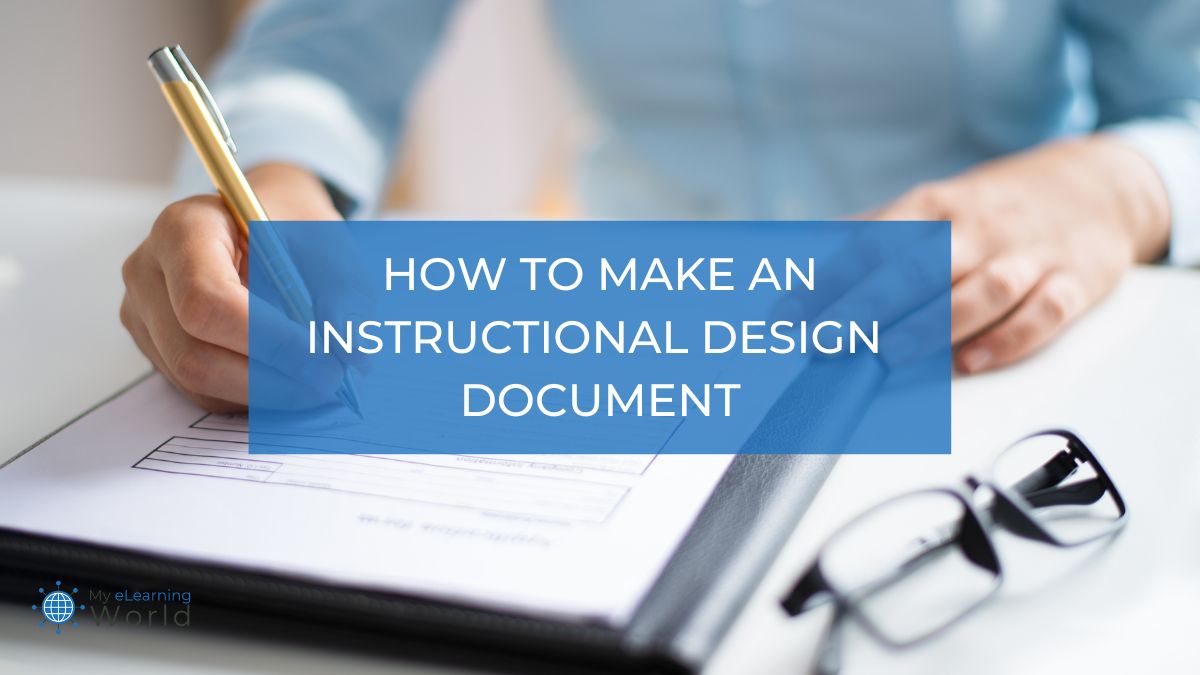An instructional design document can be a powerful tool in your project. This document is one that is created by you and your team that will help guide everyone throughout the project. Because it’s a useful resource, all stakeholders can benefit from it over the course of the project. It’s like a blueprint that will help you lay out expectations, vital information, and key points.
The main reason for creating an instructional design document is to help with the overall scope of the project. It serves as a guide to keep the team focused and ensure everyone is on the same page. This framework will guide development and help the team to understand and adhere to the same expectations.
As an instructional designer, I find that this document is truly a time saver, as it can serve as a place for team members to review expectations and even find answers to questions they may have. I prefer working with an instructional design and development document that serves as our team’s outline.
Tips for Creating Your Instructional Design Document
The formatting for your instructional design document could take on many different options.
You may prefer more of an outline, that is complete with a time order of the sequence of events.
You may opt for more of a simplistic chart or table that allows pockets of information to be more easily found by simply looking across the titles and headers.
When creating your instructional design and development document, you can create it to best serve your needs. It can look however you need it to look, but you may find it helpful to include certain components may help you build your instructional design and development document:
- Target Audience Analysis: Detail who the learners are, including their demographic information, prior knowledge, learning preferences, and any specific needs or accommodations required. This ensures the training is tailored to the audience for maximum effectiveness.
- Goals & Objectives: Be specific and clear to help ensure clarity for your team. You may also want to include the requirements for the project. The more specific, the better! Add details to help your team know the environment, expectations, and criteria needed in order to meet and master objectives.
- Materials: Maintaining a current and accurate materials list will help your team know where to get what they need. Include all tools and resources that may be needed. Many materials may be digital.
- Technology and Tools: Besides the materials list, explicitly mention any technology or software tools required for the development and delivery of the training. This could include eLearning authoring tools, Learning Management Systems (LMS), video conferencing tools, or specific software relevant to the training content.
- Communication: Because your team may include many types of stakeholders, you may find it helpful to create a communication hub and list the links in your instructional design and development document. This will be especially helpful for team members who may not be in the project on a daily basis, like a subject matter expert or multimedia designer.
- Instructional Strategies: Outline the pedagogical approaches and instructional strategies you plan to use, such as blended learning, flipped classroom, experiential learning, or gamification. This section should align with the learning objectives and the needs of your target audience.
- Assessment Strategy: It’s important to detail how the effectiveness of the instructional materials and activities will be evaluated. Include both formative and summative assessment methods to measure learner progress and the overall success of the course. Specify the tools and criteria you’ll use for assessments, such as quizzes, assignments, peer reviews, or practical exercises.
- Other: Feel free to include whatever other information you think may be needed. You may want to include a section on strategies or context.
Other Resources
- How to create an instructional design portfolio
- Instructional designer salary guide
- The best instructional design courses online
- Instructional design resume tips
- Common instructional designer interview questions
- Where to find instructional design jobs
- Instructional design job listings
- Instructional design career path
- Instructional design masters programs
- The best instructional design certificate programs
- Top instructional design bootcamps
- How to write an instructional design cover letter
Final Thoughts
As instructional designers and developers know, there are many theories, models, principles, and methods available for us to use when tackling a project. Including specifics about the construction and process of your project can be helpful, especially if there are multiple instructional designers and developers on your team or in this project.
Providing clarity about the specifics of the process will eliminate errors, save time, and boost productivity in the overall realm of the project.
Instructional design documents are helpful in ensuring there is a level of accountability for each role of the team members. In addition to holding the team accountable, the instructional design document is a valuable tool in helping clarify the roles and responsibilities for each team member.
The more clear the expectations can be, the more streamlined the process can be and the better experience for the project is achievable.
By creating an instructional design and development document, you are adding a beneficial resource to your project that will help all stakeholders.
Have any questions about creating an instructional design document? Leave a comment below so we can help you out.

